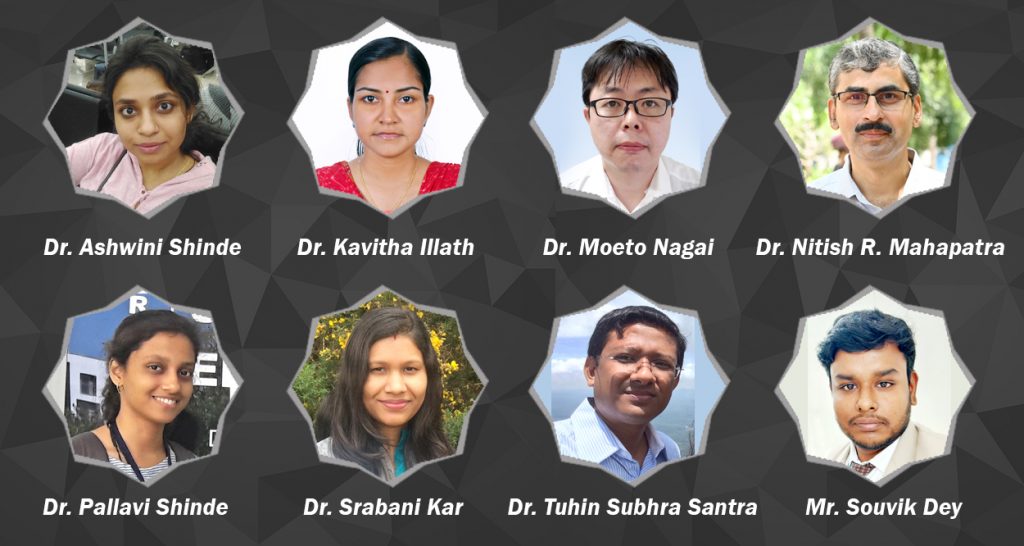
The basic unit of life is the Cell. Thus, it makes sense to learn more about the functioning and properties of the cell, especially in higher organisms like humans.
With a better understanding of the behaviour of a cell, diagnostic and therapeutic methods for the treatment of diseases like cancer, can be made more effective.
‘Transfection’ is the process by which foreign biomolecules like nucleic acids are inserted into the cell to study them. The problem is the method of delivery of the large number of small and large biomolecules into the cell. These biomolecules include proteins, enzymes, DNA, drug molecules, and small interfering RNA. Thus, several forms of delivery are constantly being researched.
There are basically, two main types of delivery methods to transfer biomolecules into the cell. These are:
1. Carrier-mediated methods.
2. Membrane disruption-based methods.
The Carrier-mediated method of delivery includes chemical methods, where a viral genome is engineered to carry the desired genome sequence into the cell. In this method, the carrying capacity is less, and the cell sends an immunogenic response to the engineered virus, which makes it an unsafe option for transfection. Moreover, this is a cell-specific delivery method and toxicity becomes a major concern.
In the Membrane disruption-based method, physical energy-based disruption of the cell membrane and generation of transient nanopores is carried out to facilitate delivery via diffusion or fluid convection. This method is more advantageous for a variety of reasons, such as, improved delivery efficiency, no unwanted immune response, and a high cell viability.
Based on the source of energy used, physical methods are classified into Electroporation, Photoporation/Optoporation, Mechanoporation, Sonoporation, Magnetoporation, and Microinjection. Most of these methods have drawbacks, such as, being laborious, time consuming, costly, and causing cell damage. Of all these methods, the Photoporation /Optoporation is the preferred method since the cell escapes with less damage this way. Here a light-matter interaction helps disrupt the cell membrane and allows a large number of biomolecules to be inserted into the cells.
Along with Photoporation, gold and carbon nanoparticles, grapheme quantum dots and many other metallic/nonmetallic substances/nanoparticles have been tried. But even these methods have the drawback that, they cause cell damage because of the high ultraviolet to visible energy required for these operations. Moreover these methods can deliver only small molecules.
The solution to this problem comes by using near-Infrared (NIR) to Infrared (IR) range for maximum penetration of electromagnetic radiation in any biological tissue. NIR and IR range has the advantages of being biocompatible and causing less cell damage.
In this study, the authors Dr. Ashwini Shinde, Dr. Pallavi Shinde, Dr. Kavitha Illath, Dr. Tuhin Subhra Santra from the Department of Engineering Design, and Mr. Souvik Dey, Dr. Nitish R. Mahapatra from the Department of Biotechnology, Indian Institute of Technology Madras, Chennai, India, Dr. Srabani Kar from the Indian Institute of Science Education and Research, Tirupati, India, and Dr. Moeto Nagai from the Department of Mechanical Engineering, Toyohashi University of Technology, Japan, used NIR with a Titanium micro-ring (TMR) device via the optoporation approach using IR light pulse.
The TMR device used in this study had controlled, uniform, parallel intracellular delivery and high cell viability. Also, because of the use of infrared light, the risk of genomic modifications was eliminated. The laser fluence was also low which is advantageous in reducing the toxicity and increasing the cell viability.
The TMR device was successful and small-to-very large biomolecules such as propidium iodide (PI) dye, dextran, small interfering RNA, plasmid DNA, and beta-galactosidase enzyme, were successfully delivered into human cervical (SiHa), mouse fibroblast (L929), and mouse neural crest-derived (N2a) cancer cells.
The TMR device has the potential for use in cellular therapy and diagnostics. It can further be used for genome editing, gene silencing, and its imaging. In future studies, TMR can be used for bio-molecular delivery into primary and stem cells also.
Prof. Ki-Taek Lim, Professor from the Department of Biosystems Engineering, Bio-Nanorobotics Group: Integrative Biology & Medicine, Kangwon National University, Chuncheon, South Korea, has acknowledged the importance of the work done by the authors, thus: “Prof. Tuhin S. Santra’s group developed “metallic micro-ring system for highly efficient large cargo delivery in animal cells via infrared light pulses”. The TMR device fabricated by Prof. Santra’s group has shed light on a new way to improve uniform parallel intracellular delivery of small to large biomolecules into diverse cells by controlling infrared light pulse actuator. A developed TMR system can deliver a kind of molecules with propidium iodide (PI; 668.4 Da) dye, dextran (3 kDa), small interfering RNA (13.3 kDa), enhanced green fluorescent protein expression plasmid DNA (6.2 kb), and β-galactosidase enzyme (465 kDa) into human cervical (SiHa), mouse fibroblast (L929), and mouse neural crest-derived (N2a) cancer cells. I strongly believe that these excellent outcomes and a fabricated TMR system will highly contribute to cellular diagnostic and therapeutic applications.”
Article by Akshay Anantharaman
Click here for the original link to the paper










